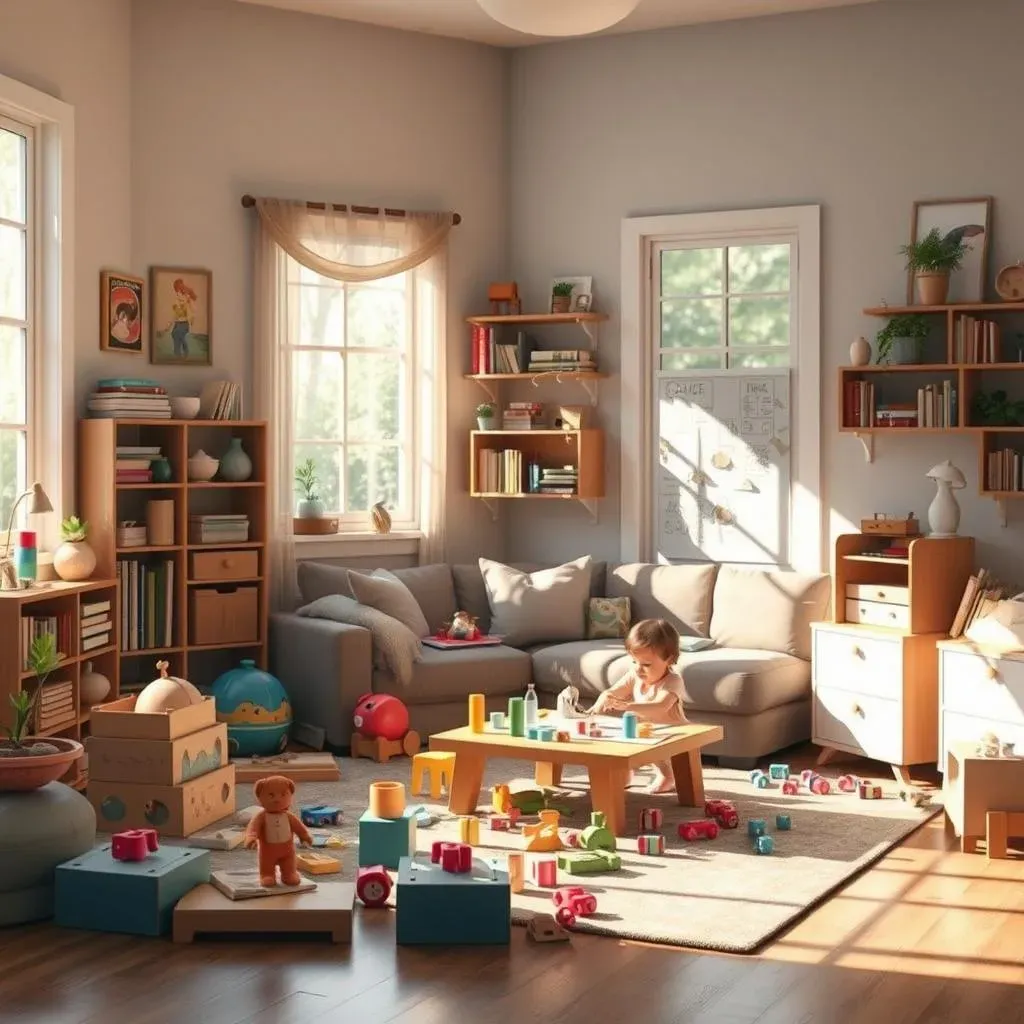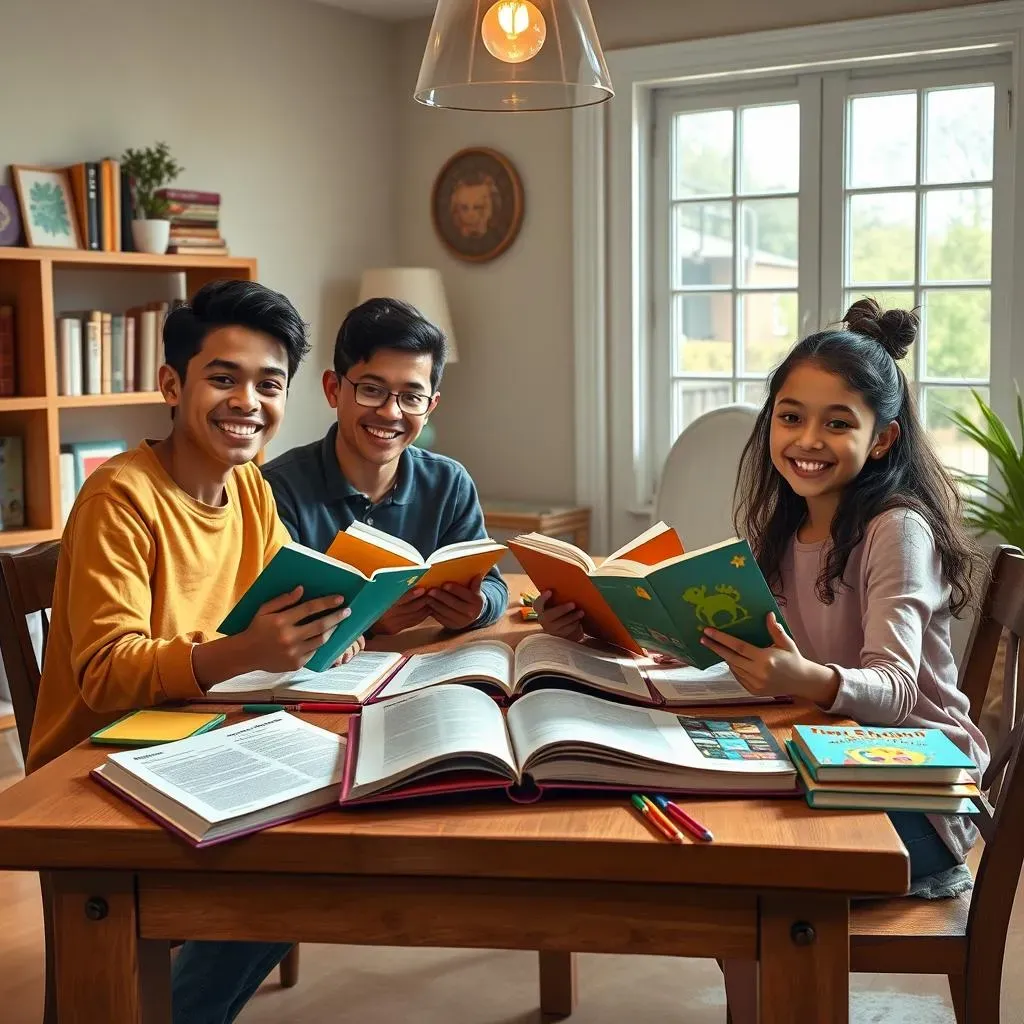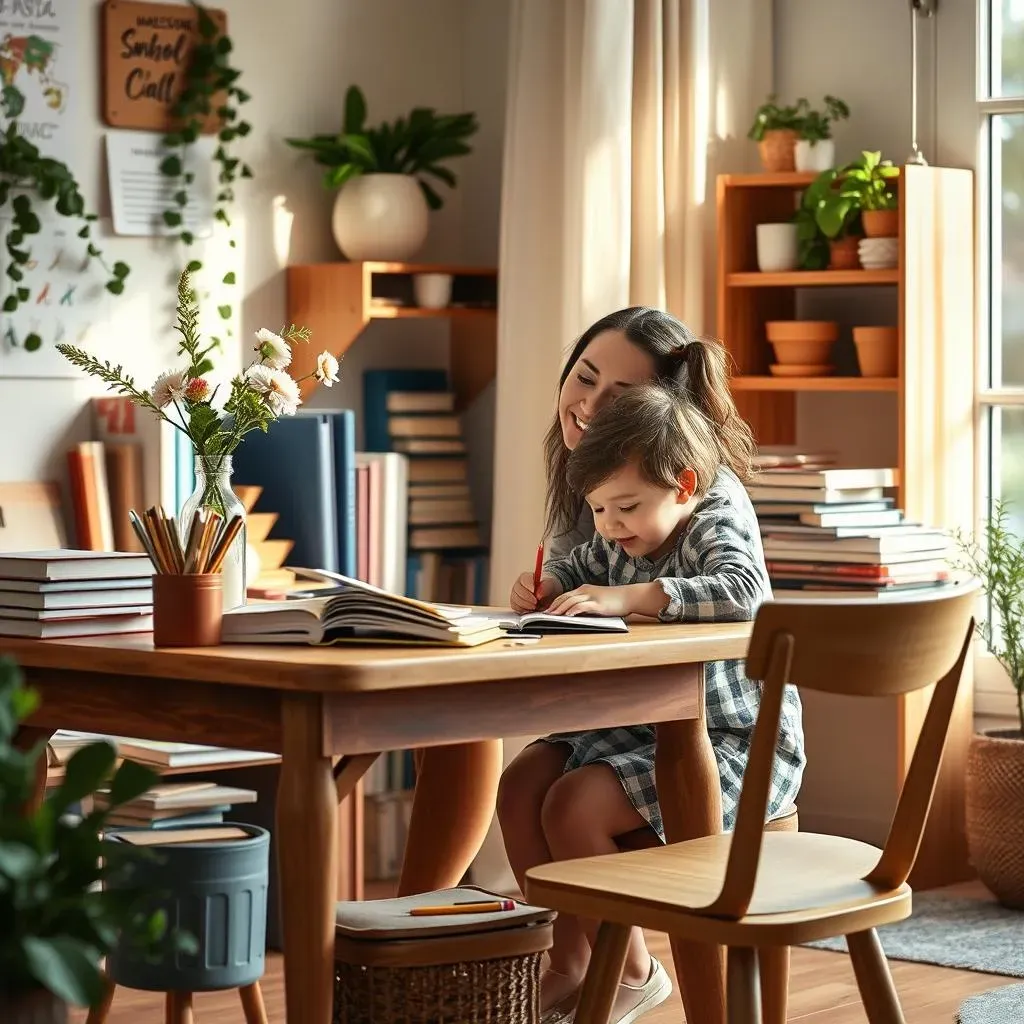Table of Contents
Thinking about kindergarten homeschool? It might seem like a big leap, but trust me, it's totally doable, and it can be a blast! Forget those stuffy classrooms and rigid schedules. We're talking about creating a learning adventure right in your living room. This article is your friendly guide to navigating the world of kindergarten homeschool. We'll explore why play is actually serious business for little learners, and we'll check out different curriculum options that fit all kinds of families, from free resources to structured programs. Plus, we'll tackle common questions and share real-world tips to make your homeschool journey a success. Whether you're a seasoned homeschooler or just starting to wonder if this is the right path for your family, get ready to discover how fun and rewarding kindergarten homeschool can be. We'll cover everything from why a formal curriculum might not even be needed, to how to choose a learning style that suits your child best, and how to make sure you're making the most of your time together. Let's get started and turn your home into a hub of discovery and fun!
PlayBased Learning: The Heart of Kindergarten Homeschool
PlayBased Learning: The Heart of Kindergarten Homeschool
Why Play is Serious Business
so you might be thinking, "Play? Isn't that just kids messing around?" Nope! For kindergarteners, play is how they learn best. Think about it: when kids are building a fort, they're problem-solving. When they're playing pretend, they're developing social skills and expanding their vocabularies. It's not just about fun; it's about laying the foundation for all sorts of future learning. It's the most natural way for them to explore the world and make sense of it.
I remember when my nephew was learning about shapes. Instead of flashcards, we used building blocks. He was so much more engaged, and it stuck with him way better than any worksheet ever could. That's the magic of play-based learning; it makes learning stick because it's relevant and fun.
What Does Play-Based Learning Look Like?
So, what does play-based learning look like in a kindergarten homeschool setting? It's less about textbooks and more about creating an environment that fosters curiosity and exploration. It could be anything from setting up a dramatic play area where they can be doctors or chefs, to having a science exploration station with magnifying glasses and natural objects. Think of it as guided play, where you’re providing the tools and the space, and they're leading the way with their imaginations. It's about letting them take the lead, and you're there to support their interests and help them make connections to the world around them. It’s not about them doing what you want, but about them exploring what they want.
I once saw a friend of mine using water and food coloring to teach her kid about mixing colors. It was messy, yes, but it was also incredibly effective. The child was learning science without even realizing it. The mess was just part of the fun and learning process!
Play-Based Activity | Learning Focus |
|---|---|
Building with Blocks | Spatial reasoning, problem-solving |
Dramatic Play | Social skills, language development |
Nature Walks | Observation, science concepts |
Art Projects | Creativity, fine motor skills |
Making it Work For You
The best part about play-based learning is that it’s totally adaptable to your child's interests and your home environment. No need to buy expensive toys or materials. You can use household items, nature finds, and lots of imagination. The key is to be flexible and follow your child's lead. If they're suddenly obsessed with dinosaurs, then bring dinosaurs into your play time. If they're curious about how plants grow, then start a little garden together. It’s about capitalizing on their curiosity and making learning a natural part of their day.
Don't overthink it! I remember stressing about making everything perfect when I started homeschooling. But honestly, the best learning moments often come from the unplanned, messy, and spontaneous play sessions. It's about creating a learning environment not forcing a structured lesson. Embrace the chaos and have fun with it!
Kindergarten Homeschool Curriculum: Finding What Works
Kindergarten Homeschool Curriculum: Finding What Works
Do You Even Need a Curriculum?
so you're thinking about a kindergarten homeschool curriculum, right? Here's the thing: you might not even need one! Especially at this age, a formal curriculum isn't always necessary. Seriously! Play-based learning, which we just talked about, can be a super effective way to cover all the basics. Reading aloud, answering their endless "whys," and letting their curiosity guide you can be more than enough to get them ready for the next stage. It’s about the learning moments, not the perfectly planned lesson.
I remember feeling like I needed to buy all the things when I first started. But I quickly realized that my kids were learning just as much, if not more, from our everyday adventures and the books we read together. Don't feel pressured to buy into a curriculum if it doesn't feel right for your family.
Exploring Curriculum Options
But, if you do want a little more structure, there are tons of options out there. You’ve got everything from free online resources to fancy, literature-based programs. Some folks love the freedom of a play-based curriculum, while others prefer a more traditional approach with workbooks and lesson plans. The key is to find something that fits your child’s learning style and your teaching style. Don't feel like you need to pick just one; you can mix and match different resources to create your own unique blend. It’s your homeschool, you get to make the rules!
My friend, Sarah, uses a combination of a free online math program and a literature-based reading curriculum. She says it gives her kid the structure he needs while still keeping things fun and engaging. It’s all about finding that balance.
Curriculum Type | Description | Pros | Cons |
|---|---|---|---|
Free Online Resources | Websites, apps, printables | Affordable, flexible | Can require more planning |
Literature-Based | Uses stories and books | Engaging, fosters a love of reading | Can be less structured |
Play-Based | Focus on hands-on activities | Fun, natural learning | May require more creativity |
Traditional | Workbooks, lesson plans | Structured, easy to follow | Can be less engaging |
Choosing What's Right For You
When you're choosing a curriculum, think about your child: Do they love to move around? Are they visual learners? Do they thrive on structure, or do they prefer a more relaxed approach? Also, consider your own teaching style. Are you a planner, or do you prefer to go with the flow? Your homeschool should be a reflection of your family's values and lifestyle. It's okay if you don't follow the norm and create something uniquely yours. It's a journey, not a race, so don't be afraid to experiment and find what works best for you and your child.
Someone once told me that the best curriculum is the one that gets used. It’s not about the prettiest textbooks or the most expensive program, but about finding a method that clicks with you and your child. It’s not one-size-fits-all, so don't be afraid to be different!
Making Homeschooling Kindergarten Work For You: Tips & FAQs
Making Homeschooling Kindergarten Work For You: Tips & FAQs
Creating a Rhythm, Not a Schedule
so you've got the play and the curriculum figured out, but how do you actually make this whole kindergarten homeschool thing work day-to-day? Forget about rigid schedules and timed lesson plans. Think of it more like creating a rhythm to your day. Kids need some predictability, but they also need the freedom to explore their interests. It's about finding a balance between structured activities and free play. It might mean starting your day with a read-aloud, then moving to some hands-on activities, and then heading outside for some fresh air and exploration. It's not about the clock, but about creating a flow that works for you and your child.
I remember trying to stick to a strict schedule when I first started, and it was a disaster. My kids were constantly resisting, and I was constantly stressed. Once I let go of the clock and focused on a more natural rhythm, things got so much easier and enjoyable. It is a dance not a march!
Don't Be Afraid to Deschool
What's deschooling, you ask? It's all about questioning the traditional school model. It's about realizing that learning doesn't have to look like what you saw in a classroom. It means trusting your child's natural curiosity and allowing them to learn at their own pace. It might mean ditching the worksheets and embracing real-life experiences. It might mean taking a field trip to the grocery store to learn about math, or heading to the park to study nature. Deschooling is about unlearning what you thought learning should look like and opening yourself to new possibilities. It's about creating a love of learning, not just a love of following the rules.
I used to worry that if I didn't follow a curriculum exactly, my kids wouldn't learn anything. But once I embraced deschooling, I realized that learning is everywhere, and my kids were learning more than I ever thought possible. It’s about trust and letting them lead the way.
- Embrace flexibility.
- Follow your child's lead.
- Learning is everywhere!
Common Questions and Concerns
Let’s tackle some of the common worries that pop up when considering kindergarten homeschool. Like, is your child going to be ready for first grade? Will they be social enough? Will you actually have time to get anything done? The truth is, every child is different, and every homeschool journey is unique. Your child will learn at their own pace, and you can create plenty of opportunities for socialization. Plus, you can adjust your learning methods as you go to fit your child's needs. It’s okay to not have all the answers right away. The key is to trust yourself, trust your child, and remember that you're creating a learning adventure together.
I’ve had so many parents ask me if their kids will be 'behind' if they homeschool. Honestly, most of the time, it's the opposite. Homeschooling allows for personalized learning, and that's a huge advantage. It’s not about keeping up, but about moving forward at the right pace for your child.
Question | Answer |
|---|---|
Will my child be ready for first grade? | Absolutely! Focus on building a love of learning. |
Will they be social enough? | Create opportunities for socialization with other kids. |
Will I have time to get things done? | It's all about finding a balance that works for your family. |
Wrapping Up Your Kindergarten Homeschool Adventure
So, you've explored the world of kindergarten homeschool, and hopefully, you're feeling a bit more confident. Remember, this isn't about recreating a classroom at home. It's about creating a space where your child can explore, learn, and grow at their own pace. Whether you choose a formal curriculum or embrace play-based learning, the most important thing is to foster a love of learning. Don't stress about following a rigid plan; be flexible, listen to your child, and have fun! You've got this! Homeschooling kindergarten is a journey, not a destination, and it's a journey you and your child can enjoy together.